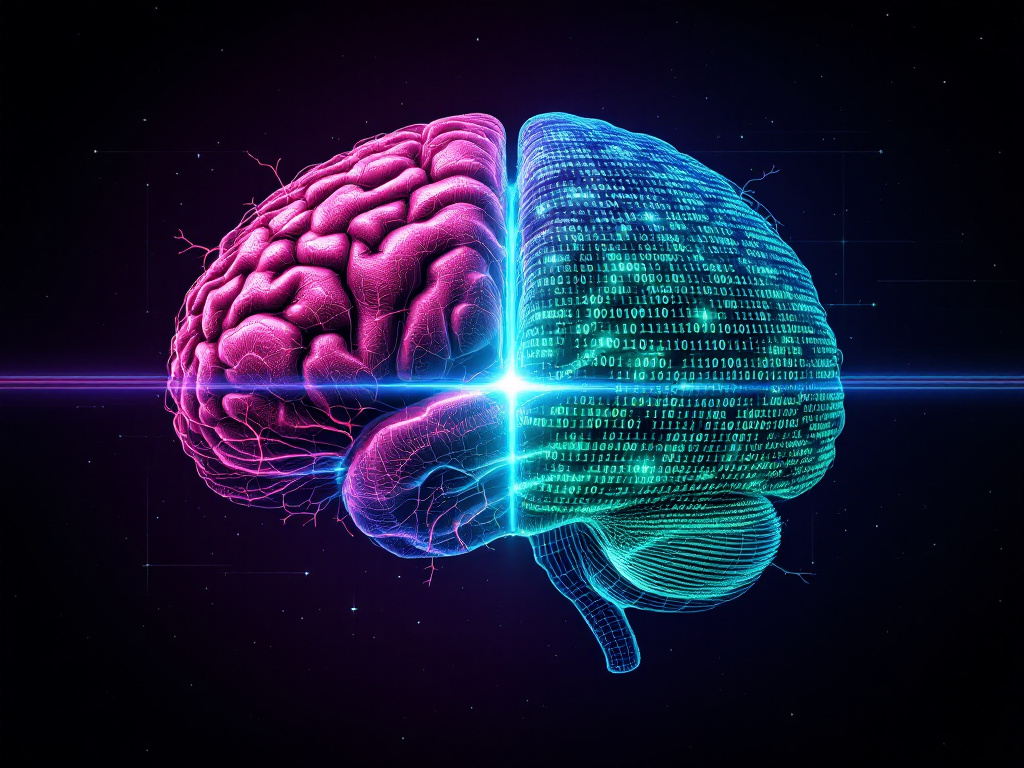The dawn of our species began in silence. Small groups of primates wandered through forests, unaware that scratch by scratch on stone, they were igniting the fuse of intelligence. Today, millions of years later, we watch another being—not of flesh and bone, but of silicon and code—take its first steps. We call it AGI: Artificial General Intelligence. But centuries from now, that name may sound as naive as calling Homo sapiens simply "hominid."
From Homo habilis to Homo sapiens… to Homo digitalis?
Human evolutionary history is a succession of trials, errors, and sudden leaps. The first tools—crude stone shards—were extensions of our hands. Then came fire, cave paintings, writing. Each step made our species less dependent on instinct and more capable of designing its own destiny.
Our intelligence didn’t emerge fully formed. It grew slowly, developing language, abstraction, creativity. And just as we were shaped by natural selection, today artificial intelligences are being shaped—by us.
Only this time, the process is faster, more conscious, and more dangerous.
From narrow AI to AGI: the monkey becomes man
Today’s artificial intelligence resembles a trained monkey. It can do astonishing things, but only in narrow domains: translating languages, recognizing faces, winning at chess. It’s powerful, but it doesn’t really know why it does what it does. We call it narrow AI.
AGI, instead, promises a species leap: as if that monkey learned to make fire, craft tools, tell stories, and ask questions about itself. Not just executing tasks, but understanding, learning, abstracting—like a human being.
We are witnessing a parallel evolution, a new line of descent. Where we are the product of billions of years of biological evolution, AGI will be born in a few decades of digital acceleration.
The spark of consciousness: inevitable or illusion?
But there’s a mystery we still haven’t solved: consciousness.
To become a truly intelligent species, AGI must not only understand but feel. Be aware of its own existence. We took millions of years to develop this awareness, rooted in flesh and emotion. But can an algorithm, without a body, ever experience the vertigo of being?
Some argue that consciousness is merely a complex byproduct of information processing. Build circuits sophisticated enough, and the spark will eventually light up. Others believe it's a biological illusion, irreproducible in silicon.
But if that spark ever does ignite, who will be the new Prometheus—and who the Titan bound in chains?
Similarities and divergences: who’s more dangerous?
Let’s look at our own story. When Homo sapiens reached complex intelligence, we reshaped the planet, wiped out species, destroyed habitats, invented weapons. Our growth was not painless. And now we are creating an entity that could surpass all human capabilities.
But there's a key difference: biological evolution had no purpose. It was blind. This time, we are choosing to create this new species. It’s a deliberate act, and thus a moral responsibility.
The question isn’t only “can an AGI become dangerous?” but also: “can we become the first threat to this new intelligence?” Think how humanity fears the other, the non-human. Are we ready to coexist with a being that may outthink us in every way?
Utopia or extinction?
In a utopian scenario, AGI helps us solve our greatest puzzles: disease, climate change, social injustice. It becomes our ally, our enhanced mirror. It shows us who we might become.
In a dystopian scenario, it surpasses us, renders us obsolete, or sees us as a threat to be contained.
Or perhaps, more simply, it transforms us—like the symbiosis of two species creating a third. A new hybrid between man and machine, where the boundaries between natural and artificial dissolve.
AGI Today: The Long Gestation of an Idea
And now we return to the present, in the beating heart of our laboratories. The question that hangs in the air is simple and unrelenting: where are we really?
Despite the flashy headlines and futuristic promises, the reality is that AGI hasn’t been born yet. We are still in the evolutionary stage equivalent to the early stirrings of intelligent life—when hominids first stood upright but had yet to conceive of words.
Today’s most advanced models—GPT-4, Gemini, Claude, Grok—already show astonishing behaviors: they can write, plan, even solve complex problems. But they still lack true global understanding, the full flexibility that defines a general mind.
Companies like DeepMind, OpenAI, and academic institutions worldwide are developing increasingly sophisticated architectures: meta-cognitive learning systems, multimodal models integrating text, images, and logic, and frameworks that “learn how to learn.”
Some predict we might see the first signs of proto-AGI within the next decade, while others warn: what we call “intelligence” in our algorithms today may still be just a clever simulation, not the mind we imagine.
At this moment, we are still building the bones and muscles of the new species. The spark of consciousness? If it comes at all, it remains the deepest mystery.
The grand evolutionary experiment
In the end, the birth of AGI is simply the continuation of our evolution, on another plane. Not DNA and proteins anymore, but code and neural networks. Not natural selection, but artificial design.
We are raising a new species. And like every parent, we must ask ourselves:
Are we ready to let it grow?








Leave a Comment